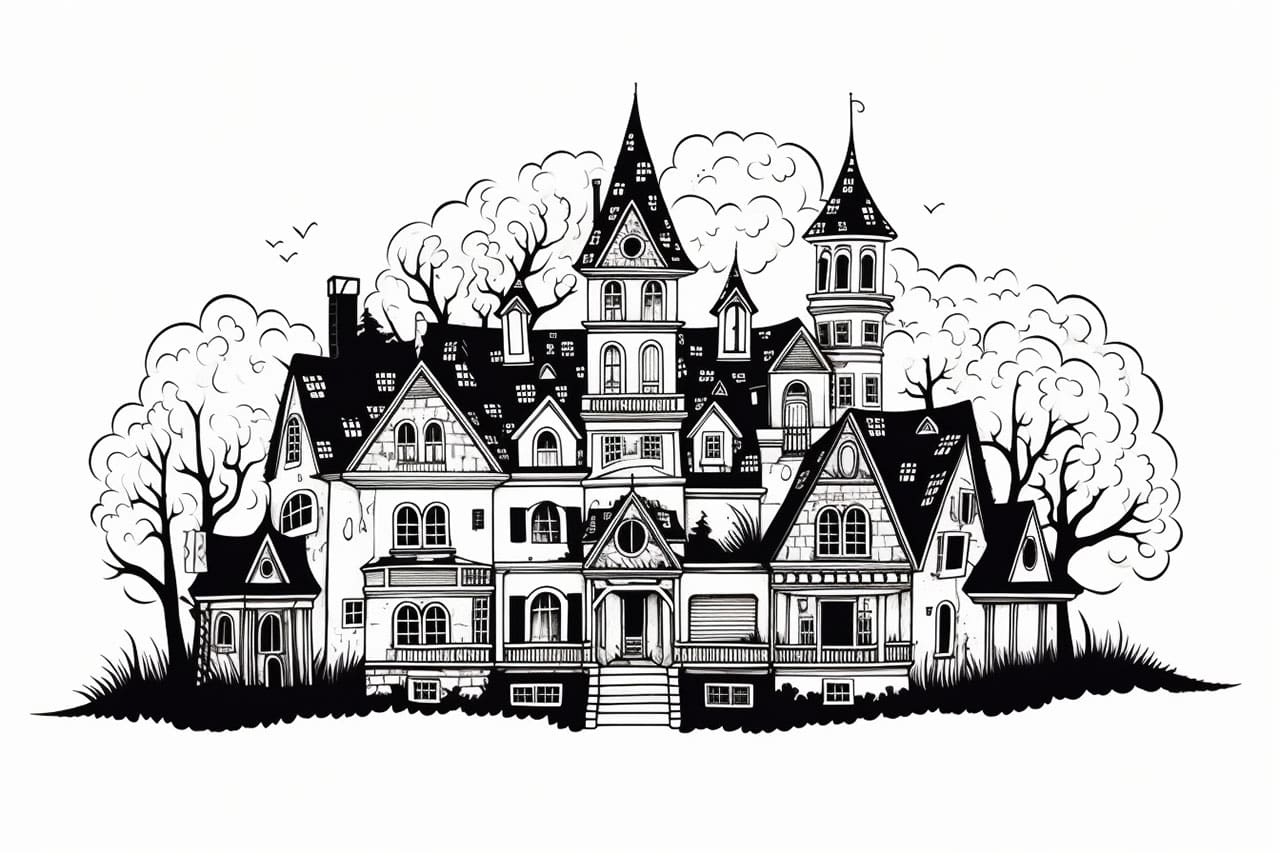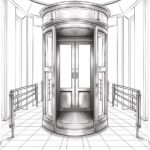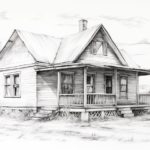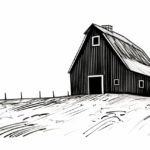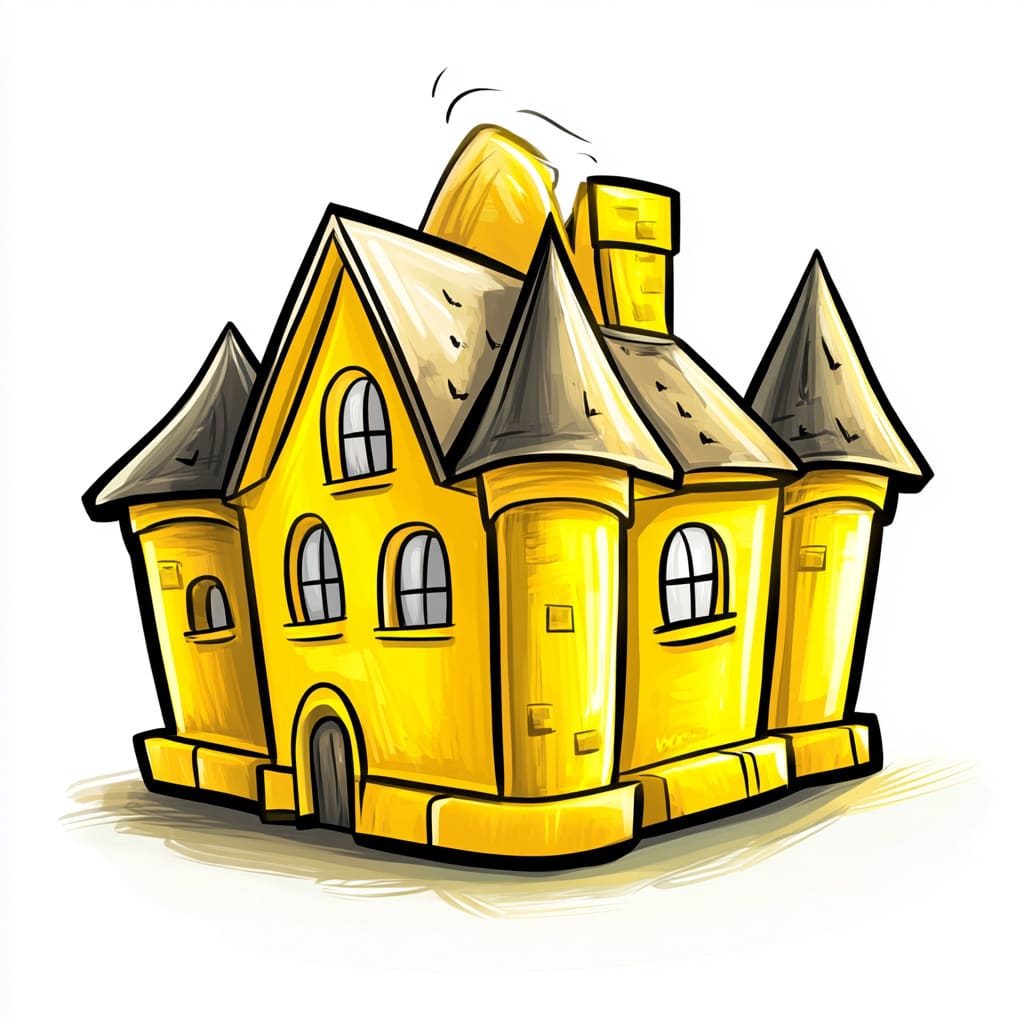
Welcome to our comprehensive step-by-step guide on how to draw a mansion! Whether you’re a budding artist looking to expand your skills or simply someone who appreciates fine architecture, this tutorial will provide you with the tools and techniques to create a stunning representation of a grand residence. From the foundational shapes to the intricate details that bring your drawing to life, we’ll walk you through each stage of the process.
Drawing a mansion can seem like a daunting task, but fear not! With the right guidance and a bit of patience, you will discover that it’s an enjoyable and rewarding experience. In this article, we will break down the drawing process into manageable steps, ensuring you feel supported every step of the way. So, gather your drawing materials and prepare to unleash your creativity as we embark on this artistic journey together. Let’s get started on building your architectural masterpiece on paper!
Materials Required
Before we begin, gather the following materials:
- Drawing paper or sketchbook
- Pencils (preferably multiple hardnesses like HB, 2B, and 4B)
- Eraser (kneaded or vinyl eraser)
- Ruler
- Compass (optional)
- Fine-line pens (optional, for outlining)
Now that we have everything we need, let’s dive into the step-by-step process of drawing a mansion.
Step-by-Step Guide: How to Draw a Mansion 
Drawing a grand, elegant mansion is a fantastic way to practice architectural drawing, perspective, and intricate detailing. Whether you’re sketching a modern luxury home, a classic Victorian estate, or a sprawling castle-like mansion, this step-by-step guide will help you bring your vision to life.
So, grab your pencils, ruler, and sketchbook, and let’s create a stunning mansion drawing! ️
Step 1: Sketch the Basic Shapes
Start by lightly sketching the foundational shapes of the mansion using simple geometric forms:



Tip: If you want a more dynamic composition, experiment with different perspectives—such as a three-quarter view rather than a simple front-facing sketch.
Step 2: Add the Rooflines and Key Features
Now that you have the basic structure, it’s time to define the rooflines and architectural details:



Tip: For a classic look, try a sloping, triangular roof with columns and archways. For a modern mansion, experiment with flat roofs, large glass windows, and sharp angles.
Step 3: Refine the Details and Add Unique Features
Now it’s time to define the intricate details that will make your mansion unique:



Tip: Luxury mansions often include fountains, driveways, or lush gardens—consider adding these elements to enhance the scene.
Step 4: Add Depth with Shading and Texture
To make your mansion look more three-dimensional, let’s add shading and texture:




Tip: Use a variety of pencil hardnesses (HB for light areas, 4B-6B for dark shadows) to create a realistic range of tones.
Step 5: Outline and Define the Final Drawing
Now that your mansion has depth and texture, let’s finalize the details:



Tip: If you want a bolder, cleaner look, consider inking your sketch using a fine-tip black pen.
Step 6: Erase Unnecessary Guidelines and Clean Up
With your final lines in place, it’s time to clean up your drawing:



Step 7: Optional – Add Color and Background
If you want to bring your mansion to life, consider adding color or a scenic backdrop:



Tip: For a realistic effect, blend gradients and highlights to create a natural play of light on the mansion’s surfaces.
Final Thoughts on Drawing a Mansion 
Congratulations! You’ve successfully drawn a grand mansion from start to finish!
By following these step-by-step techniques, you’ve learned how to:



Challenge yourself by drawing a different mansion style—try a gothic castle, a futuristic villa, or a European palace!
Practice perspective to create more dynamic, angled views of buildings.
Add storytelling elements—maybe your mansion has a mysterious past, a grand party happening, or a secret garden behind it!
With practice and creativity, you can create incredible architectural illustrations that bring your dream homes to life. So keep sketching, keep refining, and most importantly—have fun!
Gallery of Mansion Drawings
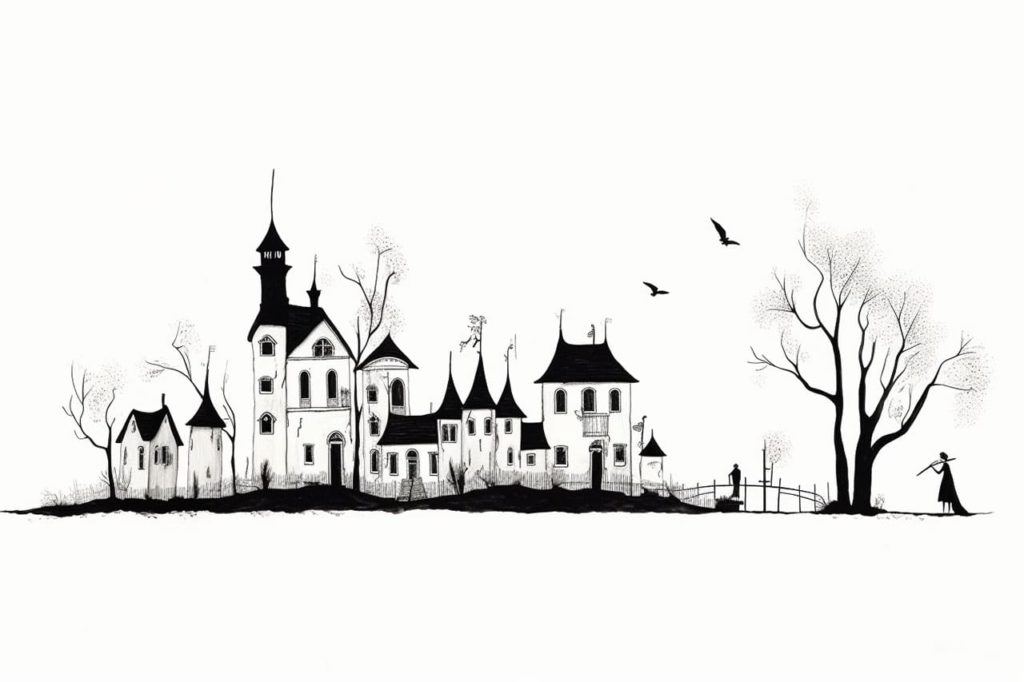
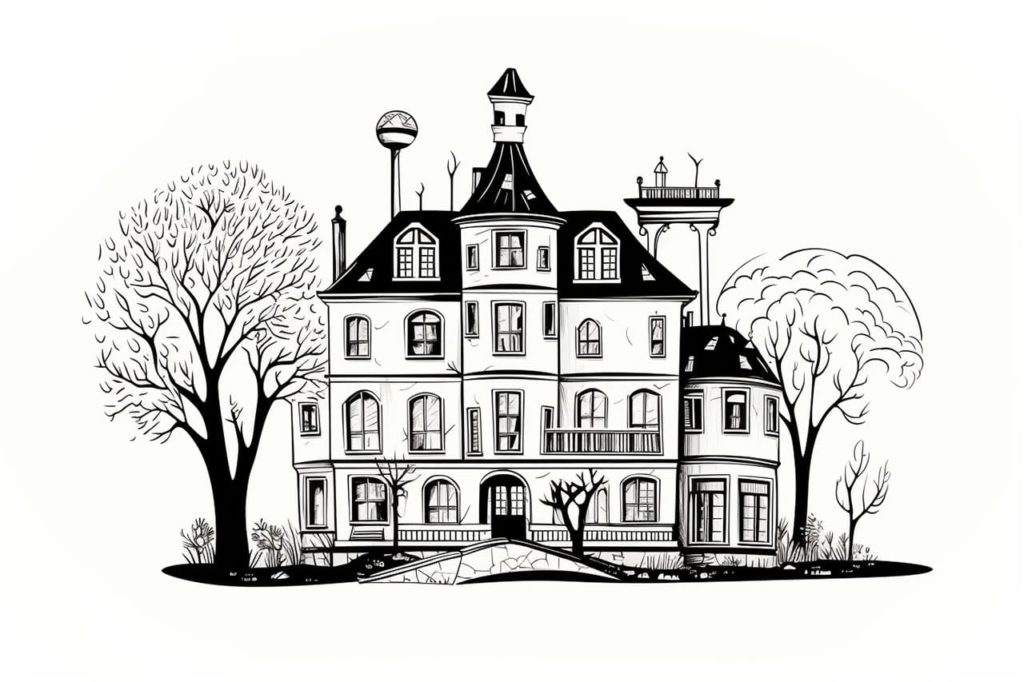
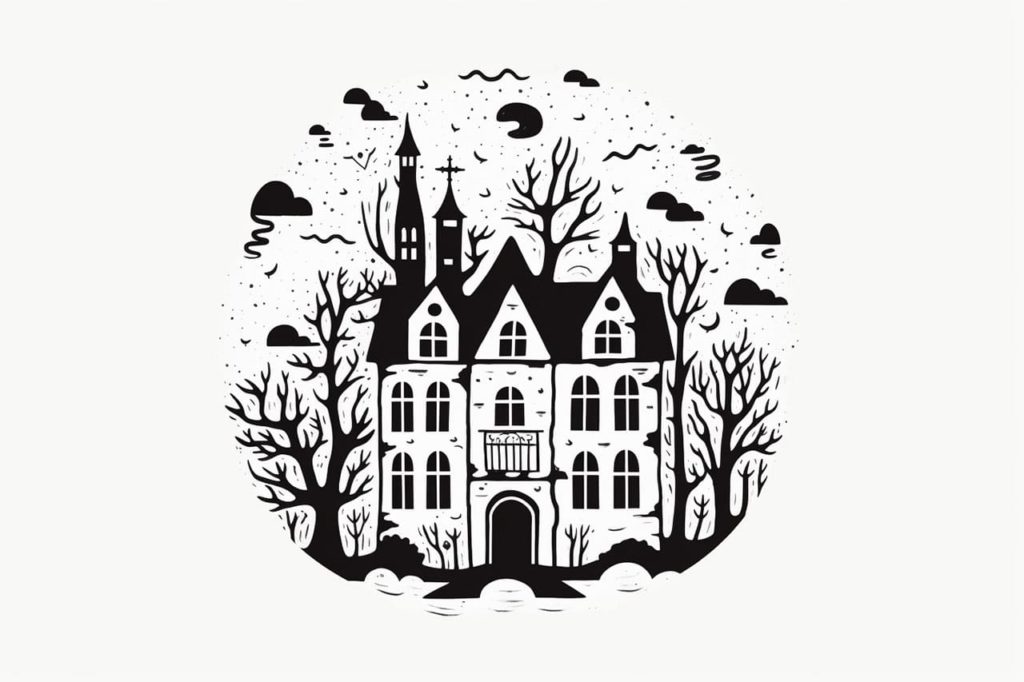
Fun Facts About Mansions
- Mansions have been symbols of wealth and luxury since the times of ancient Rome, where patricians owned large estates called “domus.”
- In the United States during the Gilded Age, a massive surge in building opulent mansions occurred, fueled by rapidly accumulating wealth.
- Traditionally, mansions are defined not just by their size, but by the inclusion of amenities such as multiple bedrooms, swimming pools, and expansive gardens.
- The famous Biltmore Estate in North Carolina, built by George Washington Vanderbilt II in 1895, is the largest privately-owned home in the U.S. with over 250 rooms.
- Some mansions have secret passages and rooms, originally designed for security or seclusion, which adds an element of mystery and intrigue.
- Mansions in Beverly Hills and the Hamptons are known for attracting celebrities and high-profile individuals, making these areas famous worldwide.
- Many historical mansions are now museums, offering visitors a glimpse into the past lives of the elite.
- Eco-friendly mansions are a new trend, incorporating sustainable technologies like solar panels and greywater systems.
- Mansions often inspire awe in architecture enthusiasts, featuring a variety of styles like Gothic Revival, Italianate, and Neoclassical designs.
- Modern mansions may include high-tech features such as smart home systems, in-home theaters, and infinity pools.
Suggestions for Scenes and Settings for Mansion Drawings
- Victorian Grandeur: Capture the essence of a Victorian mansion with intricate stonework, towering spires, and lush gardens blooming in early spring.
- Coastal Retreat: Illustrate a mansion perched on a cliffside overlooking the ocean, with large windows facing the sea and waves crashing against the rocks below.
- Garden Maze: Create a scene featuring a mansion surrounded by an elaborate hedge maze, complete with fountains and statues.
- Evening Elegance: Paint a picture of a mansion lit gently by lanterns at dusk, shadows playing across the elegant facade and a grand entrance hall.
- Winter Wonderland: Depict a mansion blanketed in snow, with warm lights glowing from the windows and chimneys puffing smoke into the crisp air.
- Secret Passage Adventure: Imagine a drawing where hidden doors and secret passages are revealed, perhaps leading to a hidden library or treasure room.
- Modern Marvel: Design a contemporary mansion with sleek lines, massive glass panels, and a minimalist garden.
- Historical Event: Illustrate a grand ball taking place in a mansion’s opulent ballroom, complete with chandeliers and elegantly dressed guests.
- Fantasy Mansion: Dream up a whimsical setting with a mansion made from sugar and candy, nestled in a fantastical land with oversized flora and fauna.
- Sunset Silhouette: Draw a silhouette of a grand mansion as the sun sets, casting vibrant hues of orange and pink across the sky and estate.

